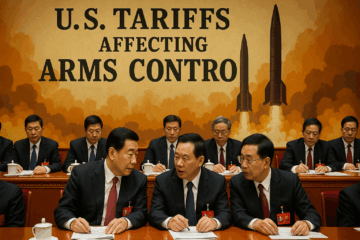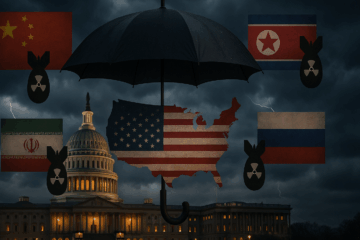Standoff warfare has emerged as a pivotal approach in modern warfare. By keeping forces beyond the reach of adversaries and utilizing long-range offensive capabilities, nations aim to maintain a tactical advantage while minimizing risk to personnel and equipment. This article delves into the pros and cons of standoff warfare and examines its potential as a preferred strategy against formidable adversaries like China, Russia, and Iran.
Standoff warfare is characterized by the use of long-range weapon systems, such as cruise missiles, drones, and precision-guided munitions, to engage targets from a safe distance. This approach leverages advanced surveillance, reconnaissance, and targeting technologies to identify and strike enemy assets without direct engagement.
Advantages of Standoff Warfare
One of the primary advantages of standoff warfare is the significant reduction in the risk to military personnel. By operating from a distance, forces are less exposed to direct enemy fire and ambushes, leading to fewer casualties and increased morale. By keeping forces out of the immediate reach of the enemy, standoff warfare helps preserve valuable military assets. This approach ensures that high-value equipment and personnel are available for prolonged engagements and future conflicts.
Modern long-range weapons are highly accurate, allowing for precision strikes on strategic targets. This capability enhances operational efficiency by focusing on high-value targets and minimizing collateral damage, which is crucial in maintaining public support and adhering to international laws of warfare.
The ability to strike from a distance can have a significant psychological impact on the enemy. The constant threat of unexpected precision attack can demoralize opposing forces and disrupt their operational planning and execution.
Standoff warfare allows for rapid deployment and response to emerging threats. With assets positioned at a safe distance, commanders can quickly adapt to changing battlefield conditions and execute strikes without the need for extensive mobilization.
Disadvantages of Standoff Warfare
Standoff warfare relies heavily on advanced technologies for surveillance, targeting, and weapon delivery. This dependence can be a vulnerability if these systems are disrupted by electronic warfare, cyberattacks, or other countermeasures.
The development, procurement, and maintenance of long-range weapon systems and associated technologies are expensive. The financial burden of sustaining a standoff warfare capability can strain defense budgets and divert resources from other critical areas.
Standoff warfare is most effective against concentrated, high-value targets. When facing adversaries employing dispersed, decentralized tactics, the efficiency of long-range strikes diminishes, necessitating alternative approaches.
Accurate intelligence and targeting data are crucial for successful standoff operations. The reliance on real-time, high-fidelity information can be a limitation if there are gaps in intelligence or if adversaries employ deception and concealment strategies.
The use of long-range strikes can be perceived as highly provocative and potentially escalatory in a conflict. Adversaries may respond with retaliatory measures, leading to a cycle of escalation that can spiral out of control.
China
China’s military modernization and expansion pose a significant challenge to American and allied forces in the Indo-Pacific region. China’s development of anti-access/area denial (A2/AD) capabilities, including long-range missiles, sophisticated air defenses, and naval assets, necessitates a robust standoff strategy.
Standoff warfare allows the US and its allies to engage Chinese assets from a distance, mitigating the risk posed by China’s A2/AD systems. The ability to strike from afar can disrupt Chinese operations, degrade critical infrastructure, and maintain freedom of navigation in contested areas.
China’s advancements in electronic warfare, cyber capabilities, and counter-space operations could undermine the effectiveness of standoff warfare. Additionally, the vast expanse of the Indo-Pacific region presents logistical challenges for sustaining long-range operations.
Russia
Russia’s military doctrine emphasizes hybrid warfare, combining conventional and unconventional tactics. Its integrated air defense systems, long-range missile capabilities, and electronic warfare proficiency make it a formidable adversary.
Standoff warfare enables NATO forces to counter Russian aggression by targeting key military installations, command-and-control centers, and logistical hubs from a safe distance. Precision strikes can degrade Russia’s offensive capabilities and hinder its operational tempo.
Russia’s integrated air defenses and advanced electronic warfare capabilities pose significant challenges to standoff operations. The risk of miscalculation and escalation is also high, given the proximity of NATO forces to Russian borders and the potential for rapid conflict escalation.
Iran
Iran’s strategic posture relies on asymmetric tactics, including the use of proxy forces, ballistic missiles, and naval assets in the Persian Gulf. Its ability to disrupt critical waterways and target regional adversaries necessitates a nuanced approach.
Standoff warfare allows the US and its allies to target Iranian missile launch sites, naval assets, and command structures with minimal risk to their forces. This approach can help deter Iranian aggression and protect vital shipping lanes in the region.
Iran’s use of underground facilities, mobile missile launchers, and dispersed assets presents challenges for effective targeting. Additionally, the potential for retaliatory actions against regional allies and American interests necessitates careful consideration of the broader geopolitical implications.
Conclusion
Standoff warfare continues to offer significant advantages in terms of force protection, precision, and operational flexibility. However, its effectiveness is contingent on technological superiority, accurate intelligence, and the ability to adapt to evolving threats. Against adversaries like China, Russia, and Iran, standoff warfare provides a valuable tool for countering their respective military capabilities. Nonetheless, it must be integrated into a comprehensive strategy that addresses the unique challenges posed by each adversary and mitigates the risks of escalation and technological vulnerabilities. As hypersonic, low-observable, and other advancing technologies continue to develop, they will force the need for rapid evolutions of military doctrines which will need to consider the role of standoff warfare as a critical component of modern defense strategies.
Joshua Thibert is a Contributing Senior Analyst at the National Institute for Deterrence Studies (NIDS) with nearly 30 years of comprehensive expertise, his background encompasses roles as a former counterintelligence special agent within the Department of Defense and as a practitioner in compliance, security, and risk management in the private sector. His extensive academic and practitioner experience spans strategic intelligence, multiple domains within defense and strategic studies, and critical infrastructure protection.
About the Author

Joshua Thibert
Joshua Thibert is a Contributing Senior Analyst at the National Institute for Deterrence Studies (NIDS)with over 30 years of comprehensive expertise, his background encompasses roles as a former counterintelligence special agent within the Department of Defense and as a practitioner in compliance, security, and risk management in the private sector. His extensive academic and practitioner experience spans strategic intelligence, multiple domains within defense and strategic studies, and critical infrastructure protection.




